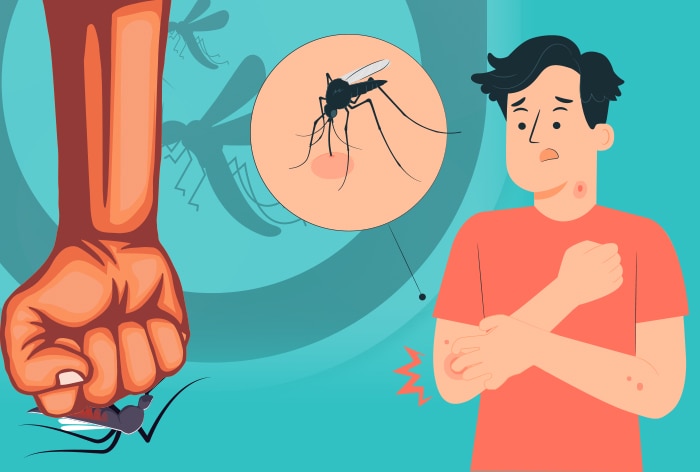Dengue symptoms appear 4 to 7 days after the bite of Aedes species mosquito. The feverish phase, critical phase, and convalescent phase are the three stages of dengue, in the same order.
Dengue Fever: The Aedes aegypti mosquito, often known as the yellow fever mosquito, bites humans to spread the illness. This type of mosquito is often active throughout the day and prey on people. The dengue virus can reach the cells of the mosquito’s stomach and salivary glands when it bites a person while they are feverish.
WHAT ARE THE FATAL SIGNS AND SYMPTOMS OF DENGUE?
Dengue fever patients may not show any symptoms or signs such as high fever, headache, discomfort in the muscles and joints, nausea, vomiting, and tiny red or bleeding patches on the skin. Dengue hemorrhagic fever, which can cause circulatory system collapse, shock, and even death, can develop from severe dengue fever.
Due to the wide variety of dengue fever symptoms, which can range from moderate to severe, and the lack of a precise preventative or treatment method at this time. The disease can be serious owing to various types of bleeding, in the patient’s life. It’s critical to get medical help right away if you think you might have dengue fever.
To avoid severe symptoms like hemorrhagic fever, it’s critical to diagnose dengue fever early. A dengue diagnostic test is advised as a preventative strategy if you are showing signs of dengue or have recently visited a tropical, subtropical, or dengue-endemic area.
WHAT ARE THE 3 CRUCIAL STAGES OF DENGUE?
The symptoms of dengue are frequently minor and might be confused for those of the flu or another virus. Febrile, critical and convalescent phases start after the 3 to 15-day incubation period following the infected mosquito bite.
- Febrile Phase: The febrile phase, which lasts for two to seven days, is marked by the abrupt development of a high temperature that normally ranges from 39 to 40 degrees Celsius.
- Critical Phase: The second phase, the critical period, follows the febrile phase by around 3–7 days. Most infected individuals do not progress to this stage. It is the most important time for careful observation. It may entail side effects including shock brought on by a high temperature or internal bleeding brought on by plasma leaking from blood arteries into bodily cavities like the liver, abdomen, or chest.
- Convalescent Phase: The patient moves into convalescent phase as plasma leakage slows down. Fluids that escaped from the plasma and supplied intravenous fluids will start to be reabsorbed by patients who make it through the 24-48 hour crucial phase.
The presence of dengue fever symptoms in a patient should not be taken at face value; instead, they require examination and close monitoring to prevent potentially fatal sequelae.

